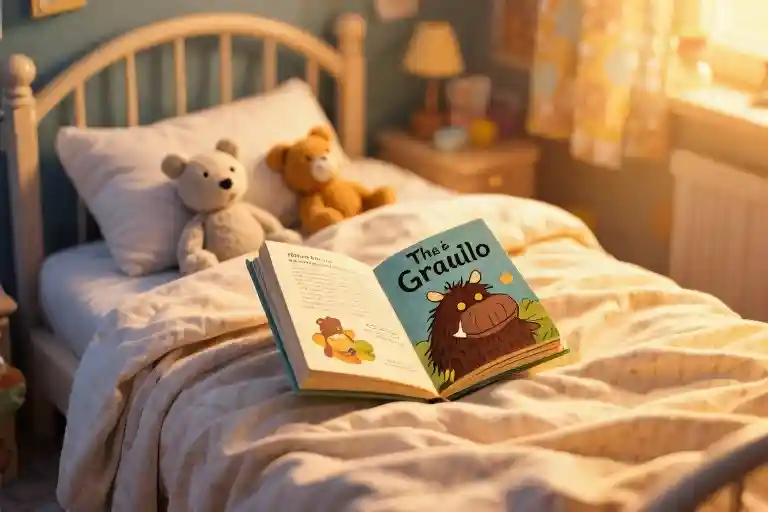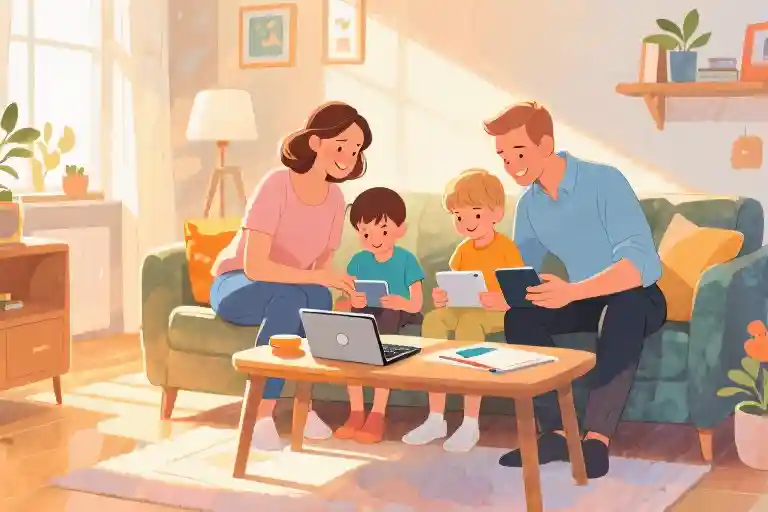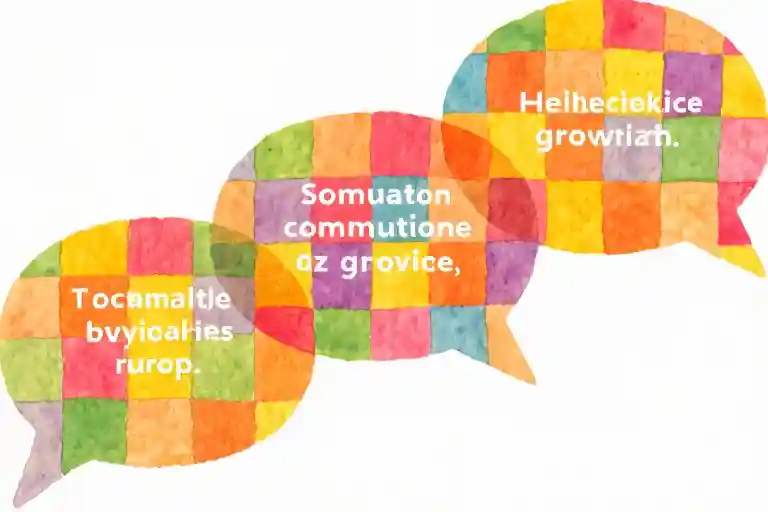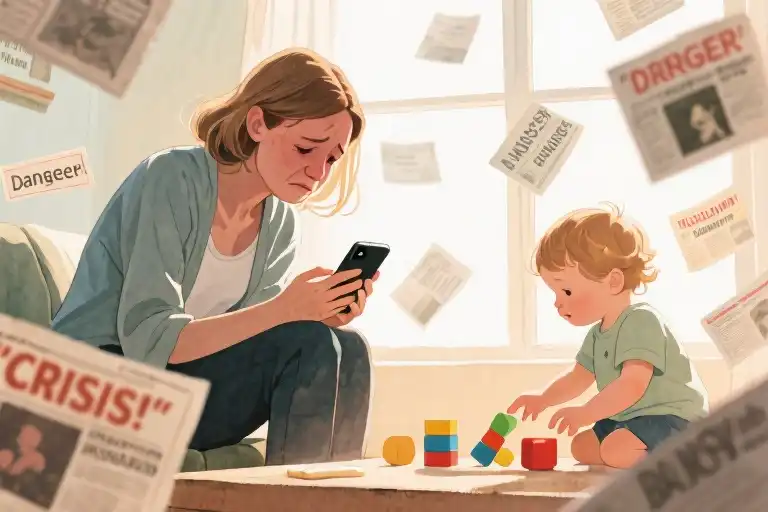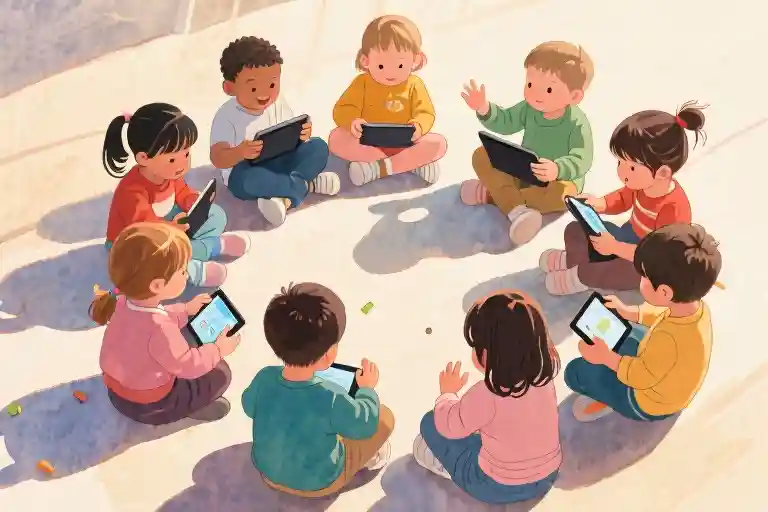The light in the bedroom takes on that particular golden haze that only exists in the hour before sleep. Teddy bears stand guard on rumpled pillows while small hands absentmindedly twist the corners of well-loved blankets. This is when the magic begins – not with a wand or incantation, but with the quiet rustle of pages turning.
What seems like simple bedtime reading reveals itself as something far more extraordinary upon closer inspection. That tattered copy of The Gruffalo? It’s not just a book being read for the tenth night in a row. It’s a linguistic playground where words like “knobbly knees” and “terrible tusks” become slides and swings for developing minds. The school library’s newest mystery? More than plot twists – it’s a training ground for emotional intelligence where children learn to navigate fear and excitement within safe boundaries.
Parents often wonder why children request the same stories repeatedly. The answer lies in how young minds process language differently than ours. Where adults hear repetition, children discover new layers of meaning with each encounter. That passage about the witch’s “long ginger hair which she wore in a plait” from Room on the Broom does more than describe a character – it builds neural pathways for adjective-noun combinations while simultaneously painting mental images more vivid than any animation.
This nightly ritual transforms ordinary words into something extraordinary. Rhymes become rhythm tracks for language acquisition. Metaphors turn into cognitive bridges between concrete and abstract thinking. Even the physical act of turning pages contributes to fine motor development. What appears as winding down before sleep is actually a child’s mind revving up – absorbing linguistic patterns, emotional cues, and cultural references that form the foundation of how they’ll interpret the world.
The real magic happens in the quiet moments after the book closes. When eyelids grow heavy but the mind stays alert, replaying the story’s highlights. That’s when “glistening” becomes more than a word – it’s a sensory experience taking root in memory. When ordinary bedtime reading becomes the secret ingredient in raising curious, articulate, and emotionally aware individuals – one worn-out storybook at a time.
Why Bedtime Reading Feels Like Magic
The third request for The Gruffalo tonight. My tongue stumbles over familiar rhymes while my daughter’s eyes widen at the exact same page turn where the mouse meets the snake. Parents often confess their secret dread of repetitive bedtime reading—the same creased pages, the same predictable endings. Yet children cling to these rituals with inexplicable fervor. What we dismiss as monotony, their developing brains receive as vital nourishment.
Neuroscience reveals why repetition isn’t just tolerated but required in early literacy. When toddlers hear “knobbly knees and turned-out toes” for the fiftieth time, their neural pathways strengthen like muscles through exercise. The predictability allows their working memory to relax, freeing cognitive resources to absorb subtleties—the lilt of alliteration, the tension in a pause before the punchline. Like learning a musical scale before composing symphonies, these nightly rehearsals build the framework for complex language comprehension.
Consider what happens during the tenth reading of Room on the Broom:
- First exposure: The child tracks basic plot—”Witch loses hat”
- Fifth reading: They notice secondary elements—”The cat looks grumpy when the dog joins”
- Tenth reading: They absorb linguistic nuances—”Ginger hair worn in a plait sounds different from just braided“
This layered learning mirrors how adults appreciate fine wine or jazz—initial encounters register broad strokes; repetition reveals depth. The magic lies in what we don’t see: synaptic connections forming with each “Once upon a time,” each giggle at the known-yet-still-delightful climax. Our boredom signals their brain’s fireworks.
Two phenomena explain children’s craving for repetition:
- The mere exposure effect: Familiarity breeds preference, making well-worn stories emotional comfort food
- Statistical learning: Young brains unconsciously catalog language patterns from repeated phrases, building grammar intuition
When my son demands Goodnight Moon for the 27th night running, he’s not being stubborn—he’s conducting fieldwork in how language works. The green room and red balloon aren’t just scenery; they’re data points in his ongoing research project on adjective-noun pairings. Our sighs over repetitive reading stem from having completed this research ourselves decades ago.
The paradox of bedtime stories: What feels like parental endurance training becomes children’s masterclass in cognitive architecture. Those worn-out pages? They’re not frayed from overuse—they’re softened by love, like well-trodden paths to neural wonderlands.
The Hidden Nutrients in Repetitive Reading
The third request for The Gruffalo tonight. My voice automatically finds the rhythm of those familiar verses while my mind wanders to tomorrow’s grocery list. Then small fingers tap my wrist: ‘Mama, why does the snake look scared here?’ The question snaps me back to the page – to the illustration we’ve seen forty times before, where my child now notices new details I’d missed.
This is the paradox of repetitive reading. What feels like parental tedium becomes fertile ground for children’s cognitive growth. Those worn pages hold layered lessons that unfold differently with each encounter.
Language Patterns That Stick
Take Julia Donaldson’s Room on the Broom. When we recite ‘The witch had a cat and a very tall hat,’ the cadence does more than entertain. The ABAB rhyme scheme creates neural scaffolding – young brains latch onto predictable sound patterns to decode language structure. My five-year-old now finishes these lines unprompted, her voice rising on ‘hat’ just as mine does, unconsciously grasping how intonation conveys meaning.
The witch’s ‘long ginger hair which she wore in a plait‘ offers another lesson. That specific description – ginger, not just red; plait, not just braid – builds vocabulary through context. Last week, my daughter pointed to a stranger’s coiled hair: ‘Look Mama, her plait is like the witch’s!’ The story had given her language to categorize her world.
The Comfort of Predictability
Neurologists explain why children crave repetition: familiar stories activate the brain’s reward centers while lowering cortisol levels. The same mechanism that makes adults rewatch favorite movies operates doubly for kids navigating an unpredictable world. When my son insists on Goodnight Moon for the twelfth consecutive night, he’s not being stubborn – he’s building emotional regulation skills.
We’ve developed rituals around certain pages. At the spread where the little bunny whispers ‘hush,’ we always lower our voices to a whisper too. This participatory predictability becomes emotional ballast. On difficult days, I see his shoulders relax when we reach this page, as if the book itself is saying: This remains unchanged.
The Depth Beneath the Surface
Early childhood specialists emphasize that with each rereading, children engage different cognitive skills:
- First pass: Tracking basic narrative
- Fifth pass: Noticing visual details in illustrations
- Tenth pass: Predicting plot developments
- Twentieth pass: Making thematic connections (‘The mouse is brave like the girl in my other book!’)
That torn copy of The Gruffalo? It’s not the same book to them each night. It’s a Russian nesting doll of discoveries, revealing new layers as their developing minds become ready to unpack them. Our job isn’t to rush them forward, but to keep turning pages until they’re done mining the riches within.
The Hidden Architecture of Beloved Stories
There’s a particular rhythm to the way children’s books lodge themselves in young minds – not through grand declarations, but through carefully constructed patterns that bypass adult cynicism and speak directly to a child’s developing cognition. The genius of books like The Gruffalo lies not in their plots (which adults might find simplistic), but in their architectural precision – every word placed like a stepping stone across the stream of a child’s attention span.
Take that iconic opening: “A mouse took a stroll through the deep dark wood.” The sentence works like a nursery rhyme, with its trochaic meter (DUM-da DUM-da) mirroring the mouse’s footsteps. Children don’t analyze this consciously any more than fish notice water, but their brains respond to the predictability. When we read “The Gruffalo” for the tenth night in a row, what feels like parental tedium is actually the child’s mind conducting sophisticated pattern recognition exercises – identifying rhymes (“wood/good”), alliteration (“deep dark”), and narrative cause-and-effect (“If you meet a snake…”).
Great children’s authors build sensory trapdoors into their prose. Consider how Julia Donaldson describes the Gruffalo: “terrible tusks, and terrible claws, and terrible teeth in his terrible jaws.” The quadruple repetition of “terrible” isn’t lazy writing – it’s neurological engineering. Each recurrence strengthens the myelin sheath around the neural pathways processing that concept, while the concrete nouns (tusks, claws, teeth) give the abstraction (“terrible”) tangible form a preschooler can grasp. When my four-year-old later describes his broccoli as “terrible,” he’s not just parroting vocabulary – he’s applying a linguistic template absorbed through rhythmic repetition.
Sensory words operate like tiny fireworks in developing brains. That “glistening” river from Room on the Broom does more than describe – it triggers cross-wiring between visual cortex and language centers. Neuroimaging shows that when children hear “the witch’s hat was tall and pointy,” their motor cortex activates as if reaching upward, while “ginger hair in a plait” lights up tactile processing areas. These aren’t just stories – they’re full-body simulations disguised as bedtime entertainment.
The best picture books contain what linguists call “language fossils” – preserved fragments of oral storytelling traditions. The call-and-response structure (“Who’s this creature with terrible claws…?”) mirrors ancient campfire tales, activating social cognition circuits as children anticipate the refrain. When we groan at another Gruffalo reread, we’re missing the profound truth: these “simple” stories are complex cognitive workouts disguised as entertainment, their rhythms and repetitions as carefully calibrated as a Bach fugue for developing minds.
Making Bedtime Reading Count: Practical Strategies for Parents
The tenth reading of The Gruffalo might test your patience, but that worn-out spine holds more value than we often realize. Those nightly repetitions aren’t just routines—they’re building blocks for language development and emotional connection. Here’s how to transform tired reading sessions into rich learning experiences.
Interactive Reading Templates by Age
For toddlers (2-3 years):
- Pause before familiar words (“And the mouse took a stroll through the deep dark…?”) to let them fill the gap
- Trace illustrations with their finger while naming colors and shapes (“This fox has orange fur like your sweater”)
Preschoolers (4-5 years):
- Ask predictive questions (“What do you think the Gruffalo will say next?”)
- Relate scenarios to real life (“Remember when we saw a squirrel in the park like in the book?”)
Early readers (6-7 years):
- Explore character motivations (“Why do you think the witch shared her broom?”)
- Play ‘story detective’ by finding repeating patterns in the text
Book Selection Strategies
Match books to developmental stages without overcomplicating:
- Board books with tactile elements for infants
- Rhyming stories with clear cause-and-effect for toddlers
- Chapter books with recurring characters for emerging readers
Keep a rotating basket of 5-7 books within reach. Include:
- One familiar favorite (for comfort)
- One new title (to expand horizons)
- One nonfiction book (about animals, vehicles, etc.)
- One ‘wild card’ (unusual illustrations or formats)
Time Management for Exhausted Parents
When energy runs low:
- Set a visible timer (“We’ll read until the sand runs out”)
- Alternate reading pages with your child
- Use audiobooks for ‘listening breaks’ while still cuddling
The magic happens in consistency, not perfection. Some nights will be rushed readings, others may spark twenty minutes of questions about why owls live in trees. Both matter equally in the quiet alchemy of bedtime stories.
The dim glow of the nightlight catches the edges of the book’s pages as I settle between two small, pajama-clad listeners. That same copy of The Gruffalo – its spine creased from loving overuse – falls open to the familiar first page for what feels like the hundredth time. Yet something shifts in the air when we begin. The bedtime routine transforms. Not because of any grand gesture, but through the quiet alchemy of words meeting imagination.
What we dismiss as simple repetition holds layers of hidden work. Children’s brains don’t tire of stories like ours do; they thrive on the predictable rhythms that let them anticipate, then confirm. Each rereading of Room on the Broom isn’t just repetition – it’s a child tracing the pathways between “ginger hair” and “plait,” building neural bridges between sound and meaning. The tenth telling allows them to notice the witch’s hat isn’t merely tall, but “very tall,” absorbing degrees of comparison through sheer exposure.
The real magic lives in those small moments between the lines. When my finger follows the text and they chime in with the rhyming word before I reach it. When they interrupt to ask why the Gruffalo’s eyes are orange (“Is that why he’s scary?”) or how the broom could possibly hold all those animals. These aren’t distractions from the story – they’re evidence of the invisible architecture being constructed behind their foreheads.
Classic picture books function like linguistic training wheels. Julia Donaldson’s rhyming couplets in The Gruffalo create a safety net of predictability (“A gruffalo? What’s a gruffalo?”/”A gruffalo! Why, didn’t you know?”) that lets children focus on decoding new vocabulary. The rhythmic repetition acts as a scaffold – once the pattern feels secure, they can reach further into the story’s depths. That’s why they request the same book night after night: mastery feels good, and each reading builds greater fluency.
We often underestimate what happens during these shared reading sessions. It’s not passive absorption but active participation – tiny fingers tracing illustrations, bodies leaning forward at tense moments, the inevitable negotiation over who gets to turn the page. The physicality matters as much as the words. Turning pages together builds anticipation; pointing to illustrations reinforces word-object connections; dramatic pauses create space for predictions. Even fidgeting serves a purpose – kinetic learners might need to bounce while listening to anchor the language in their bodies.
What looks like ordinary bedtime reading is actually a complex cognitive workout disguised as cuddle time. The brain lights up differently when processing stories versus straightforward information. Narrative structure trains young minds in cause-and-effect thinking (“If the mouse tricks the Gruffalo, then…”). Vivid descriptions activate sensory regions (“terrible tusks” and “purple prickles” spark visual processing). Emotional vocabulary grows through context (understanding “frightened” when the mouse meets the snake). All while tucked under a blanket, half-asleep.
The true gift of this ritual reveals itself gradually. Not in sudden epiphanies, but in the way your preschooler starts narrating their day with story language (“And then I ran SO FAST like the Gruffalo’s child!”). In how they comfort themselves by retelling familiar plots during stressful moments. In the sophisticated questions that eventually emerge (“Why doesn’t the witch get mad when the animals fall off her broom?”). These are the quiet victories of repetitive reading – the proof that all those nights of identical stories deposited something lasting.
When the final page turns and the book closes tonight, the real work begins. As eyelids grow heavy, those freshly formed neural pathways will keep firing, reorganizing, connecting. The stories migrate into dreams, where mice outsmart predators and kind witches rebuild broken brooms. Tomorrow night we’ll read it again – same words, same pictures, but to a slightly different child. And that’s the secret no parenting manual mentions: repetition doesn’t mean standing still. It’s the spinning wheel that lets their minds leap forward.

